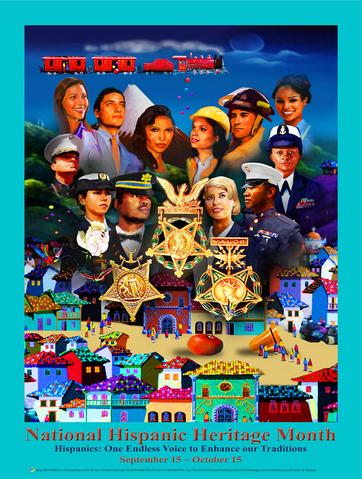National Hispanic Heritage Month is celebrated in recognition of the historical and cultural contributions of Hispanic Americans. This national observance was first established by Public Law 90-498, approved September 17, 1968, by the 90th Congress. Public Law 90-468 authorized the president to proclaim National Hispanic Heritage Week each year. On August 17, 1988, the 100th Congress enacted Public Law 10-402, which extended the observance from a week to a month. The annual observance is now a 31-day period beginning on September 15 and ending on October 15.
The months of September and October cover a wide range of independence days for Latin American countries.
However, employee groups often include other Latin American countries during the celebration. This is the Caribbean and South American countries such as
Get your Hispanic Heritage month posters and much more at CLICK HERE

